Table of Contents
Bring the magic of fantasy to life with this spectacular dragon amigurumi pattern. Perfect for intermediate to advanced crocheters, this adorable baby dragon features a curved body, detailed wings, expressive face, and beautiful color transitions. At 14 inches long with an impressive 21-inch wingspan, this huggable creature combines advanced amigurumi techniques with stunning visual impact. Whether you’re creating it for yourself or as a special gift, this comprehensive guide will walk you through every step of crafting your very own mythical companion.
The Magic of Dragon Amigurumi Design
This dragon design incorporates several innovative construction techniques that create a naturally posed, three-dimensional figure. Unlike many amigurumi patterns that work in separate pieces, the dragon’s body and tail are created as one continuous piece, with clever shaping that positions the tail between the legs in a relaxed, playful pose. The branching and merging techniques used for the limbs create realistic claws, while the dimensional wings add spectacular visual impact to the finished creation.
Essential Materials for Your Dragon Project
Before embarking on your dragon-making adventure, gather these supplies:
Yarn Selection
- Main Color: Red Heart Super Saver in Aruba Sea (100% acrylic, worsted weight, 364 yards/7 oz) – 1 ball
- Accent Color 1: Red Heart Super Saver in Real Teal (100% acrylic, worsted weight) – Less than 1 ball
- Accent Color 2: Red Heart Super Saver in Aran (100% acrylic, worsted weight) – Less than 1 ball
Tools and Notions
- G-size (4.00 mm) crochet hook (Furls Odyssey recommended for comfort)
- Two 24mm colored slit-pupil safety eyes (for that authentic dragon look)
- Polyester fiberfill stuffing
- Tapestry needle for assembly
- Straight pins for positioning parts
- Stitch markers for tracking rounds
Understanding Pattern Terminology
This pattern uses standard US crochet terms:
- ch – chain stitch
- sl st – slip stitch
- sc – single crochet
- hdc – half double crochet
- dc – double crochet
- BLO – back loops only
- RS – right side
- WS – wrong side
- inc – increase (2 single crochets in one stitch)
- dec – decrease (single crochet 2 stitches together)
Advanced Techniques You’ll Master
This project introduces several sophisticated amigurumi techniques:
- Short Rounds: Working partial rounds to create curved shapes
- Surface Crochet: Adding details to the finished work by crocheting on the surface
- Strategic Pinning: Using pins to perfectly position parts before attachment
- Branching and Merging: Creating multi-fingered limbs with a natural appearance
- Dimensional Wings: Creating realistic dragon wings with structural supports
Special Stitches Defined
- Bobble Stitch: [Yarn over, insert hook into stitch, yarn over, pull up a loop, yarn over, pull through 2 loops on hook] 5 times in same stitch, yarn over, pull through all 6 loops on hook
- Surface Slip Stitch: With loop on hook, insert hook around post or between stitches of finished work, yarn over, pull up a loop, pull through loop on hook
- Surface Single Crochet: With loop on hook, insert hook around post or between stitches of finished work, yarn over, pull up a loop, yarn over, pull through both loops on hook
- Single Crochet Join: Make slip knot in yarn, loop slip knot over hook, insert hook through stitch, yarn over, pull through, yarn over, pull through both loops on hook
- Picot: Chain 3, slip stitch in 3rd chain from hook
Essential Pattern Notes
- Work in continuous rounds unless otherwise specified
- Assemble parts in the order directed for best results
- Do not weave in attachment ends until final positioning is confirmed
- “Short rounds” are worked back and forth, deliberately leaving stitches unworked
- When instructed, extra single crochets at the end of a round move the starting point without changing stitch count
- Chain-2 at beginning of row counts as a double crochet
Creating the Curved Body and Tail
The body and tail form the foundation of your dragon with a distinctive curved shape that allows your dragon to sit naturally with its tail between its legs. This unique posture is achieved through a combination of standard rounds and “short rounds” (partial rounds that create curvature).
Starting the Tail Tip
Round 1: With Aruba Sea, chain 2, then work 6 single crochets in the second chain from hook (6 stitches) Round 2: Work single crochet in each stitch around, maintaining the same stitch count (6 stitches) Round 3: Work [single crochet, increase] 3 times to begin widening the tail (9 stitches) Round 4: Single crochet in each stitch around (9 stitches) Round 5: Single crochet in each stitch around, then turn your work (9 stitches)
Creating the First Curve with Short Rounds
Round 6: (Wrong Side)(Short Round) Without chaining, work 5 single crochets, leave remaining 4 stitches unworked, turn (5 stitches worked) Round 7: (Right Side)(Short Round) Without chaining, work 5 single crochets, do not turn (5 stitches worked) Round 8: (Right Side) Work around entire piece including unworked stitches from previous round, 9 single crochets (9 stitches total)
Building the Tail Width
Round 9: Work [2 single crochets, increase] 3 times to continue widening (12 stitches) Round 10: Single crochet in each stitch around, turn (12 stitches)
Second Curve Sequence
Round 11: (Wrong Side)(Short Round) Without chaining, work 6 single crochets, leave remaining 6 stitches unworked, turn (6 stitches worked) Round 12: (Right Side)(Short Round) Without chaining, work 6 single crochets, do not turn (6 stitches worked) Round 13: (Right Side) Work around entire piece including unworked stitches from previous round, 12 single crochets (12 stitches total)
Continuing the Pattern
Round 14: Work [3 single crochets, increase] 3 times (15 stitches) Round 15: Single crochet in each stitch around, turn (15 stitches) Round 16: (Wrong Side)(Short Round) Without chaining, work 8 single crochets, leave remaining 7 stitches unworked, turn (8 stitches worked) Round 17: (Right Side)(Short Round) Without chaining, work 8 single crochets, do not turn (8 stitches worked) Round 18: (Right Side) Work around entire piece including unworked stitches from previous round, 15 single crochets (15 stitches total)
Growing the Mid-Tail Section
Round 19: Work [4 single crochets, increase] 3 times (18 stitches) Round 20: Single crochet in each stitch around, work 9 single crochets to move starting stitch to the other side of tail, turn (18 stitches – note the position change)
Beginning to Stuff
At this point, start adding stuffing to the tail tip. The stuffing should be firm but not overstuffed, allowing the natural curve to form.
Round 21: (Wrong Side)(Short Round) Without chaining, work 9 single crochets, leave remaining 9 stitches unworked, turn (9 stitches worked) Round 22: (Right Side)(Short Round) Without chaining, work 9 single crochets, do not turn (9 stitches worked) Round 23: (Right Side) Work around entire piece including unworked stitches from previous round, 18 single crochets (18 stitches total)
Building the Tail-to-Body Transition
Round 24: Work [5 single crochets, increase] 3 times (21 stitches) Round 25: Single crochet in each stitch around, turn (21 stitches) Round 26: (Wrong Side)(Short Round) Without chaining, work 11 single crochets, leave remaining 10 stitches unworked, turn (11 stitches worked) Round 27: (Right Side)(Short Round) Without chaining, work 11 single crochets, do not turn (11 stitches worked) Round 28: (Right Side) Work around entire piece including unworked stitches from previous round, 21 single crochets (21 stitches total)
Increasing for the Lower Body
Round 29: Work [6 single crochets, increase] 3 times (24 stitches) Round 30: Single crochet in each stitch around, work 6 single crochets to move starting stitch, turn (24 stitches)
Creating Complex Curvature
Round 31: (Wrong Side)(Short Round) Without chaining, work 12 single crochets, leave remaining 12 stitches unworked, turn (12 stitches worked) Round 32: (Right Side)(Short Round) Without chaining, work 11 single crochets, leave remaining stitch unworked, turn (11 stitches worked) Round 33: (Wrong Side)(Short Round) Without chaining, work 10 single crochets, leave remaining stitch unworked, turn (10 stitches worked) Round 34: (Right Side)(Short Round) Without chaining, work 9 single crochets, leave remaining stitch unworked, turn (9 stitches worked) Round 35: (Wrong Side)(Short Round) Without chaining, work 8 single crochets, leave remaining stitch unworked, turn (8 stitches worked) Round 36: (Right Side)(Short Round) Without chaining, work 7 single crochets, leave remaining stitch unworked, turn (7 stitches worked) Round 37: (Wrong Side)(Short Round) Without chaining, work 6 single crochets, leave remaining stitch unworked, turn (6 stitches worked) Round 38: (Right Side)(Short Round) Without chaining, work 6 single crochets, do not turn (6 stitches worked) Round 39: (Right Side) Work around entire piece including unworked stitches from previous rounds, 24 single crochets (24 stitches total)
Building the Mid-Body Section
Round 40: Work [7 single crochets, increase] 3 times, work 4 single crochets to move starting stitch, turn (27 stitches)
The pattern continues with this alternating sequence of standard rounds and short rounds through Round 65, creating additional curvature. This technique is what gives the dragon its distinctive posture, with the tail curving naturally between the legs.
Transitioning to the Upper Body
From Round 66 to Round 74, work standard increase rounds (no short rounds) to expand the body to its maximum width of 45 stitches:
Round 66: Work [9 single crochets, increase] 3 times (33 stitches) Round 67: Single crochet in each stitch around (33 stitches) Round 68: Work [10 single crochets, increase] 3 times (36 stitches) Round 69: Single crochet in each stitch around (36 stitches) Round 70: Work [11 single crochets, increase] 3 times (39 stitches) Round 71: Single crochet in each stitch around (39 stitches) Round 72: Work [12 single crochets, increase] 3 times (42 stitches) Round 73: Single crochet in each stitch around (42 stitches) Round 74: Work [13 single crochets, increase] 3 times (45 stitches)
Building Body Volume
Rounds 75-88: Work single crochet in each stitch around for 14 rounds, maintaining 45 stitches and building the volume of the main body. Continue adding stuffing progressively to maintain shape.
Shaping the Neck
From Round 89 to Round 107, gradually decrease to form the neck and closure:
Round 89: Work [13 single crochets, decrease] 3 times (42 stitches) Round 90: Single crochet in each stitch around (42 stitches) Round 91: Work [12 single crochets, decrease] 3 times (39 stitches) Round 92: Single crochet in each stitch around (39 stitches) Round 93: Work [11 single crochets, decrease] 3 times (36 stitches) Round 94: Single crochet in each stitch around (36 stitches) Round 95: Work [10 single crochets, decrease] 3 times (33 stitches) Round 96: Single crochet in each stitch around (33 stitches) Round 97: Work [9 single crochets, decrease] 3 times (30 stitches) Round 98: Single crochet in each stitch around (30 stitches) Round 99: Work [8 single crochets, decrease] 3 times (27 stitches) Round 100: Single crochet in each stitch around (27 stitches) Round 101: Work [7 single crochets, decrease] 3 times (24 stitches) Round 102: Work [6 single crochets, decrease] 3 times (21 stitches) Round 103: Work [5 single crochets, decrease] 3 times (18 stitches) Round 104: Work [4 single crochets, decrease] 3 times (15 stitches) Round 105: Work [3 single crochets, decrease] 3 times (12 stitches) Round 106: Work [2 single crochets, decrease] 3 times (9 stitches) Round 107: Work [single crochet, decrease] 3 times (6 stitches)
Fasten off, leaving a long tail. Thread needle through the front loops of the remaining 6 stitches, pull tight to close, and secure. This long tail will be used for attaching the head later.
Understanding the Short Round Technique
The magic of this dragon’s posture comes from the short round technique:
- Standard rounds (worked in a spiral) create straight sections
- Short rounds (worked back and forth on a portion of stitches) create internal curve
- Connecting rounds (that pick up previously unworked stitches) maintain structure while preserving the curve
This technique creates a much more natural pose than simply bending a straight piece, as it builds the curve directly into the structure of the amigurumi.
Creating the Belly Scales
The belly scales add texture and color contrast to your dragon:
Using Real Teal, chain 11, then work a series of rows, working in back loops only for textured scale appearance. Increase at the beginning of each row through Row 9, creating a gradually widening piece, then maintain width through Row 23. Decrease at the beginning of each row through Row 31 to taper the scales.
Create a border by working single crochet stitches around the entire perimeter of the scales, creating a finished edge for attachment.
Position the belly scales along the underside of the dragon with the first row touching Round 101 of the body, ending at the bend in the tail. This placement determines the “front” of your dragon. Sew securely through both loops of the border.
Crafting the Expressive Head
The head gives your dragon personality and character:
Begin with a foundation of 6 single crochets in Aruba Sea, gradually increasing to 30 stitches by Round 5. For the distinctive nostrils, work bobble stitches at Round 6, then push them inward to create realistic nostril indentations.
Shape the head through strategic increases and decreases, insert safety eyes at Round 17, aligned with the nostrils. Ensure the eye slits are vertical when viewing the face from the front.
Complete the head with final decreasing rounds, then close and secure.
Adding Facial Details
Nostril Flares
Using surface crochet techniques, define the nostrils with surface slip stitches and surface single crochets around the upper edge of each nostril.
Expressive Eyebrows
Create two eyebrows with Aruba Sea, working a short row of single crochets and half double crochets. Sew them over the safety eyes to enhance your dragon’s expression.
Magnificent Horns
Create two horns with Aran yarn, working from a foundation of 6 single crochets and gradually increasing to 12 stitches. Position and sew them to the head behind the eyebrows.
Assembling the Head and Body
Position the head against the top of the body, creating a triangular attachment area. Use pins to mark the connection points on both pieces, then sew securely.
Creating Realistic Dragon Legs
Hind Legs
The hind legs feature three-toed feet with Real Teal claws. Begin with a foundation of 6 single crochets in Aruba Sea, gradually increasing to 24 stitches. Work the first part of the foot, then use the single crochet join technique to continue with the thigh.
Create individual claws with Real Teal tips, then join them together to form the complete foot. Attach the foot to the leg at a perpendicular angle, then attach the leg to the body with the knee facing toward the head.
Front Legs
The front legs feature four-clawed feet created with branching techniques. Start with a foundation of 6 single crochets, gradually increase to 24 stitches, then branch off to create the individual claws with Real Teal tips.
Position the front legs at the sides of the body with the elbow pointing backward and claws facing the belly, then secure them to the body.
Crafting Magnificent Wings
The wings are created in multiple sections, worked flat:
- Create two wing tips separately
- Join the wing tips with a connecting row, creating the upper wing structure
- Work the lower wing section from the center of the upper wings
- Create a decorative border with picot stitches along the wing edges
- Add wing cartilage with Real Teal surface stitches
Attach the wings to the back of the neck, positioned in an arch that follows the curve of the body. The bottom of the wings should touch the last short round of the body.
Adding the Finishing Touch: Back Spines
Using Real Teal, create a series of decorative spines with picot stitches. Attach them in a line from between the ears, straight down the back, to the curve of the tail.
Tips for Advanced Amigurumi Success
- Tension Control: Maintain consistent tension throughout for professional results
- Pinning Before Sewing: Take time to pin parts precisely before attaching
- Progressive Stuffing: Add stuffing gradually as you work for even distribution
- Curve Creation: Master the short round technique for creating natural curves
- Color Changes: Work color changes at the end of the previous stitch for clean transitions
- Surface Details: Use surface crochet to add definition to facial features
- Wing Structure: Work wing cartilage stitches loosely to allow natural draping
Creative Variations for Your Dragon
Once you’ve mastered the basic pattern, consider these creative adaptations:
- Color Combinations: Try red and orange for a fire dragon, or purple and black for a shadow dragon
- Scale Details: Add surface crochet scales to enhance the body texture
- Wing Variations: Experiment with different wing shapes or transparent fabric wings
- Size Adjustments: Scale the pattern up or down by changing hook size and yarn weight
- Pose Modifications: Adjust the leg positions or tail curve for different poses
- Elemental Features: Add flames, ice crystals, or other elements to represent different dragon types
Why Dragons Make Magnificent Amigurumi Projects
Your completed dragon amigurumi offers several special qualities:
- Fantasy Appeal: Connects with the timeless allure of dragon mythology
- Technical Showcase: Demonstrates advanced crochet skills and techniques
- Dimensional Design: Creates a naturally posed, three-dimensional character
- Emotional Connection: Forms a huggable companion with personality and charm
- Gift Potential: Makes an extraordinary, memorable gift for fantasy enthusiasts
- Display Value: Creates a stunning showpiece for your collection
Displaying Your Finished Dragon
Once complete, consider these display options for your mythical creation:
- Position on a bookshelf among fantasy books or collectibles
- Create a small “nest” using textured yarn or fabric
- Display alongside other mythical creature amigurumi for a fantasy collection
- Place near a window where light can highlight the dimensional wings
- Use as a whimsical guardian for a child’s room
Understanding the Construction Logic
This dragon pattern uses several innovative techniques to create a naturally posed figure:
- The curved body is achieved through short rounds that create internal shaping
- The wings are constructed flat but positioned to create a three-dimensional effect
- The branching technique for toes and fingers creates realistic appendages
- Surface crochet adds details without bulking up the underlying structure
- Strategic color placement enhances the dragon’s reptilian appearance
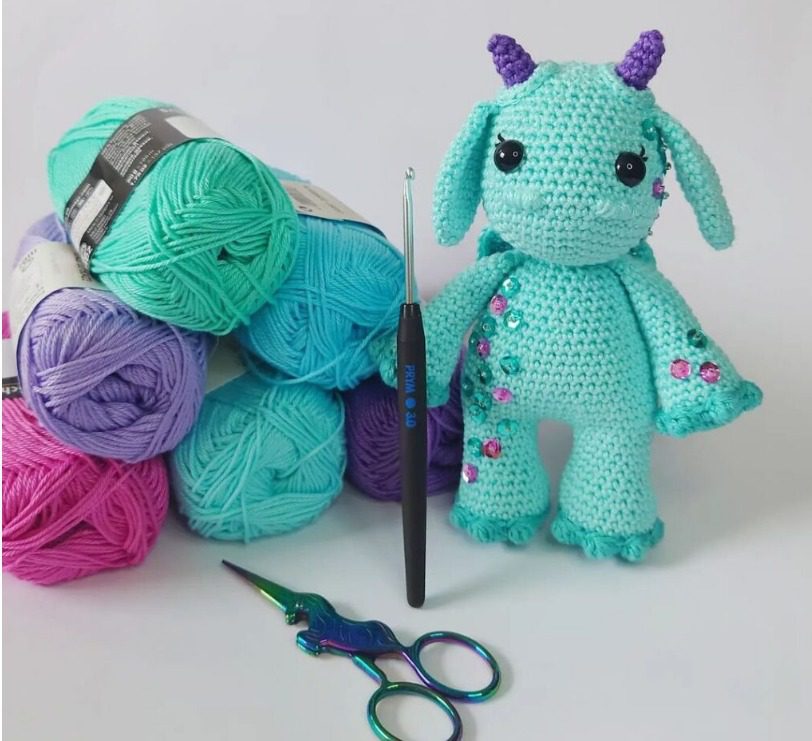
Check this out: Create a Woodland Squirrel Amigurumi
Conclusion: Your Dragon Creation Journey
Creating this amigurumi dragon allows you to combine advanced crochet techniques with fantasy artistry. The curved body, expressive face, detailed limbs, and magnificent wings work together to capture the essence of these beloved mythical creatures.
The journey of creating each element—from the curved tail to the multi-fingered claws—builds valuable skills that will enhance all your future amigurumi projects. The short round technique alone opens possibilities for creating more dynamic, naturally posed designs in your crochet work.
Whether you’re making this dragon for yourself, as a gift, or as a display piece, the process of creating each tiny stitch contributes to a spectacular finished project that showcases both your technical skill and artistic vision. Happy crocheting, and may your dragon companion bring magic to your collection for years to come!


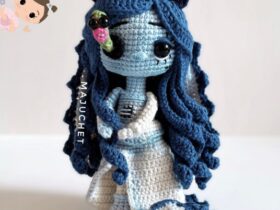
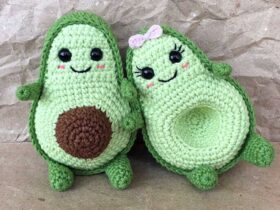
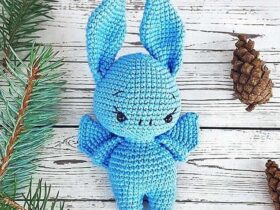
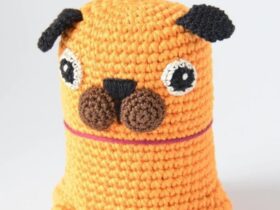
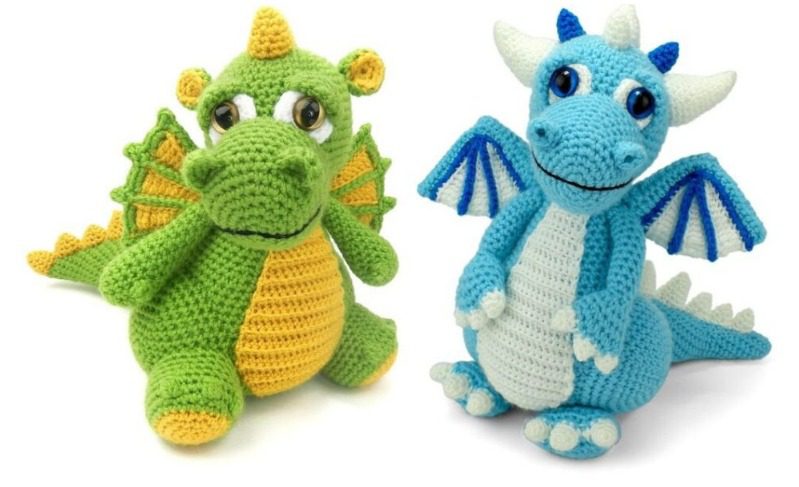
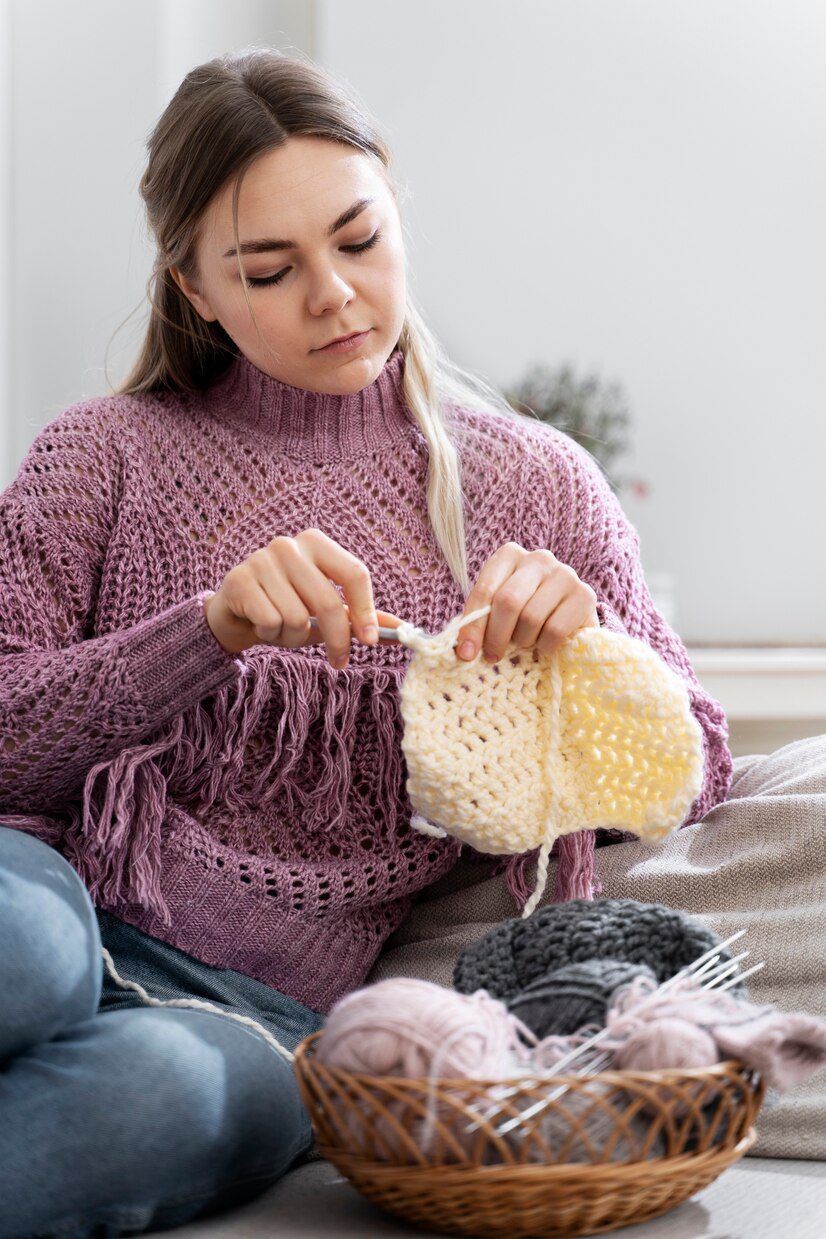

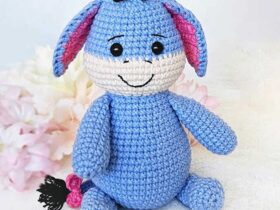
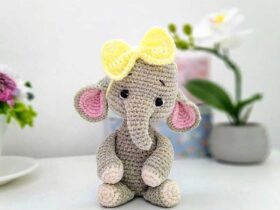
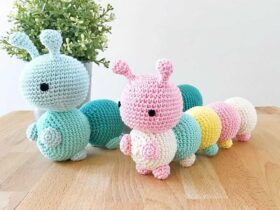
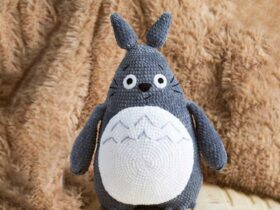
Leave a Reply